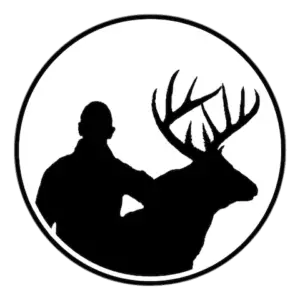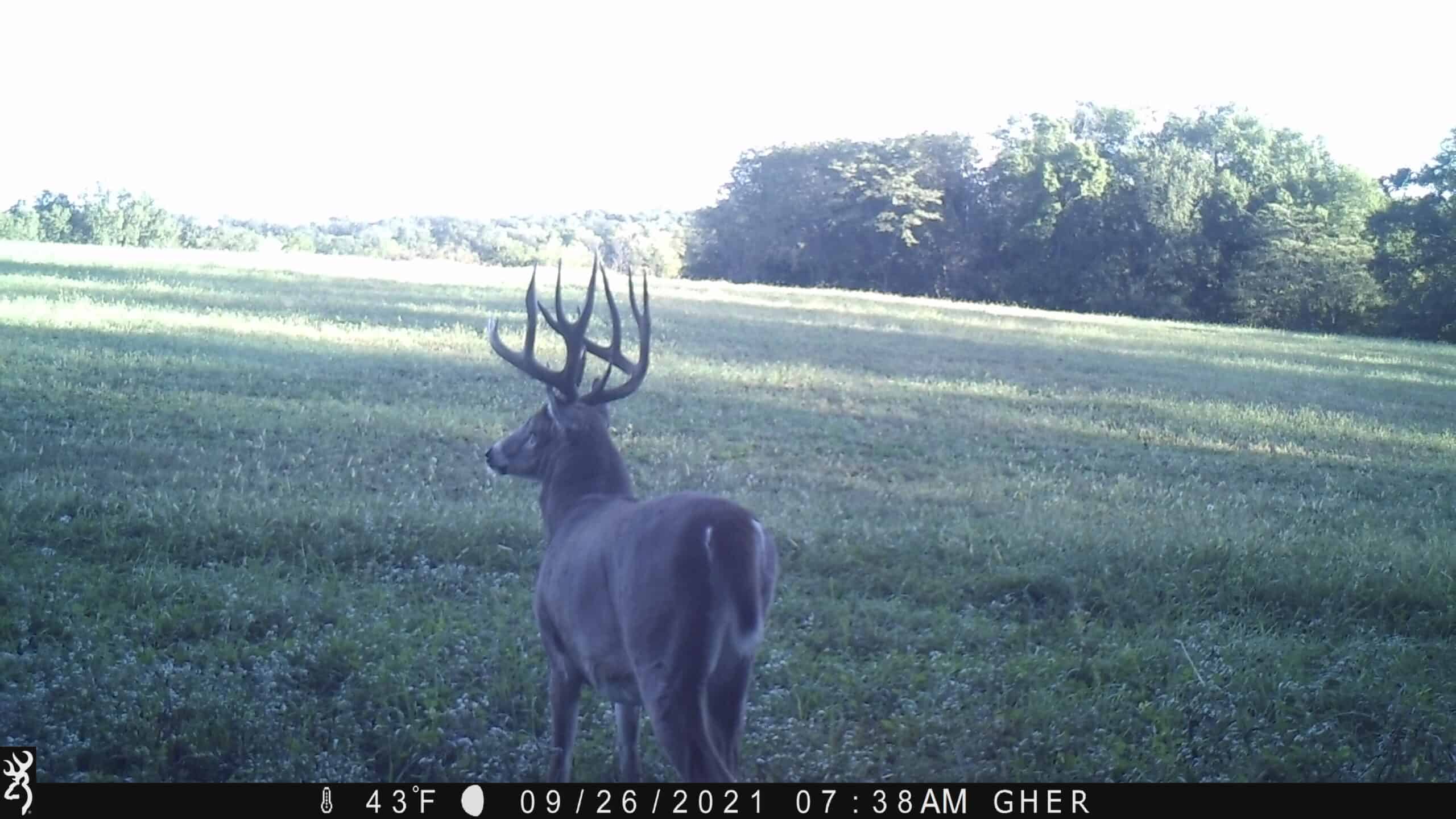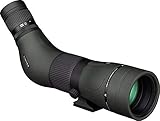Scouting for deer is not something you get good at overnight. I have been bow-hunting deer for many years, and I still find ways to get better and more efficient at it. It doesn’t matter if you are a beginner hunter or a seasoned vet, improving your scouting skills will help you be more successful at finding and killing deer. This is especially true if you are trying to kill big bucks. So, how do you scout for deer?
The internet is a great place to start scouting by looking at aerial and topographical maps of potential hunting locations, food sources, bedding areas, and access points. Once you find a place to hunt, drive around the area to get the lay of the land to see what you can learn from the road or by talking with neighbors. A key part of scouting is getting boots on the ground to look for deer trails, tracks, rubs, scrapes, scat, bedding, and food. Trail cameras are also an excellent scouting tool that can save you a lot of time scouting for deer, however utilizing all the scouting methods mentioned in this article will take your hunting success to the next level.
Scouting for deer and great hunting locations is much easier with practice. Along with practice, the amount of knowledge that you have about deer behavior will help you find great spots and help you become a better hunter. Seek answers to lots of questions so that you learn more about deer. For example, how do they respond to human pressure? Where do they like to bed? Where and when do they like to feed? Why is it harder to kill a mature buck than a young buck? Knowing the answers to these types of questions will help take your success to the next level.
I created whitetailadvisor.com to answer many of these questions. If you want to improve your deer knowledge and kill them consistently, make sure you read through my articles. Read the ones on deer behavior first.
When it comes to deer hunting, every hunter’s situation is different. For example, some of us hunt private land and others hunt public land. Some of us can legally use trail cameras while some can’t. There are lots of ways in which we are different and how we will go about scouting for deer. The main thing is that you know how to scout with each of the various methods mentioned below and know how to apply them based on your specific situation.

20 tips to help you scout for deer
1. Use the internet
The internet is a great place to start scouting if you plan on hunting a new area or a new property. Other than looking at maps, which I will discuss here shortly, there is a lot of other information on the internet that will help you make decisions on where to hunt and look for deer. For example, some public lands are broken up into units. Some units might not allow hunting on weekends while others might. If you only have free time to hunt on the weekends, you will want to know this information beforehand. You might not want to waste time scouting areas that you can’t hunt that often.
It’s also important to use the internet to read articles like this one so that you can improve your deer knowledge and scouting ability. I already mentioned earlier in this article how learning more about deer will improve your ability to scout and find great spots to kill deer.
2. Use aerial maps
Every hunter I know uses aerial maps for several reasons, including scouting. Aerial maps let you see a bird’s eye view of the land from a satellite image. This is extremely helpful for seeing the big picture. You can map out where you plan on parking your vehicle, accessing treestands, locating food sources and bedding areas, and so much more. I prefer using Google Earth and the onX Hunting App to meet most of my mapping needs. Click the link if you want to learn how to use an aerial map to find mature bucks.
3. Use topo maps
Topo maps help us understand how hilly or flat the land is. When the contour lines on the map are close together the terrain is steep, if the lines are far apart the land is flatter. When a topo map is overlayed on top of an aerial map, it’s much easier to understand the lay of the land. It enables you to recognize a potentially good hunting location that you might not have seen from just looking at an aerial photo. The onX Hunting App has a topo overlay feature making it extremely easy to read maps on your phone or your computer. If you don’t have onX you can also use the internet to look up a free topo map and create your own overlay in Good Earth. This is definitely not as easy as just having onX App.
Topo maps can help you find places that might be great funnels or pinch points for deer. It will also help you identify places where you won’t want to hunt. For example, valleys are commonly known to be bad places to hunt because of swirling winds. Deer are much more likely to smell you when you hunt in valleys where the wind tends to swirl.
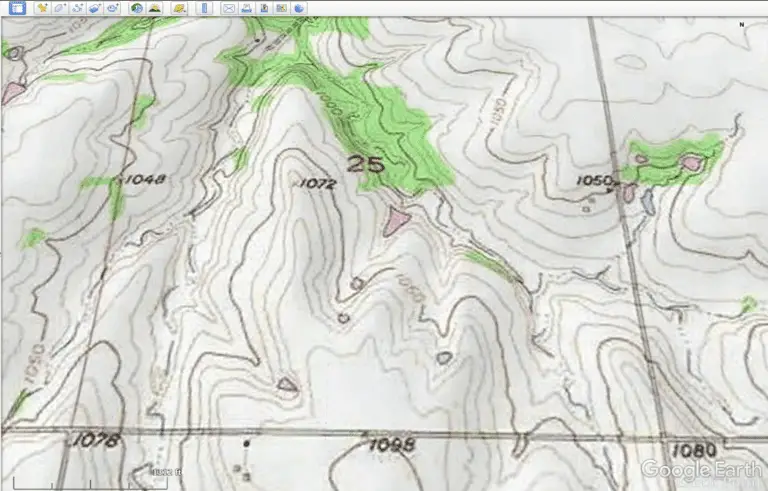
4. Scout from the road
There are a few ways to scout deer from a road. One way is driving around and covering as much ground as possible. The other method is scouting from a road while the vehicle is parked and using a spotting scope. Deer react completely different from a parked vehicle than they do a moving vehicle.
If you happen to see a deer along the side of highway, you might notice that they seem calm and unbothered from all the cars driving by. That deer would quickly be alerted and nervous if you decided to pull off the road and stop next to where they are. You can count on that deer paying close attention to you and most likely will run off immediately. Therefore, if you are driving around looking for deer try not to stop your car to look at them. Instead, drive by slowly and keep your vehicle moving.
Scouting from a road has other advantages. First, keeping your distance and not intruding on the areas where deer are likely to be will help to ensure that deer keep using that area. If you spot a big buck from a road during hunting season, you probably don’t want to go walking into the area where you think he is at. You’re better off making a game-plan from a distance and only entering that bucks area when you go in for the kill.
Lastly, there are two other methods for road scouting. However, before you hit the road and try these methods out you should check your laws to make sure it’s legal to scout this way in your area. The first method is scouting at night with a spotlight. The second method is scouting at night with a night-vision or thermal monocular.
5. Scout from a field edge
Scouting from a field edge makes it easier to spot deer from a distance than if you were scouting within the middle of timber. Deer love edge habitat so don’t be surprised if one walks by when you are scouting from the edge of a field. Hunting and scouting on field edges can be a great strategy for hunting new areas so that you can quickly learn how deer like to move through the area.
Scouting from a field edge will also cut down on the amount of human pressure that you put on a property. If you stay on the edge of cover, deer are more likely to feel safe within the middle of that cover. After hunting season is over it’s probably not that important to stay on the edge of cover. Deer will forget about your intrusions long before hunting season starts back up again. However, if you plan on hunting that area within the next 4 weeks try to stay out of the middle of security cover.
6. Trails cameras
Trail cameras have made scouting so much easier. If you don’t have much time to scout for deer then buy a trail camera, or several trail cameras, and let them do your scouting for you. Trail cameras cannot help you find rubs, scrapes, trails, etc. However, they will tell you how frequently deer are using a specific spot, their direction of travel at specific times of day, and how big they area. If you have limited time to scout then you most likely have limited time to hunt also. You can use trail cameras to help you identify where the best spots of success will be.
7. Talk to locals
Talking to locals is one of the best ways to scout and quickly learn a lot of information. Strike up conversations with people when you’re out in public. If you see a guy wearing a camo hat while pumping gas at a gas station then go talk to him. Go out for breakfast early in the morning and see what your server knows about the area or see if there are any farmers that you can talk to. I have learned so much information from talking to locals. Those conversations have definitely influenced my decisions on where to hunt and scout. I have even gained hunting permission to private properties by striking up conversations with strangers. On one of these properties, I have shot over five bucks on it over the years.
8. Talk to neighbors or landowners
For me, talking to neighboring landowners is a must. I learn something from these conversations every time, even if it doesn’t help me with my scouting. Some neighbors will tell you everything you want to know and can tell you about a big buck that they are regularly seeing in a specific corner of a field. You can also learn about other hunters in the area, the size of bucks they are killing, neighbors to be aware of, and so on.
If you try to talk to a neighbor and they shut their door in your face, you should probably assume that this person will give you trouble in the future. Even though you might not learn much from a neighbor like this, you will still benefit from attempting to have a conversation with them. Do you think this person would let you recover a deer that you shot and ran onto their property? Maybe not. Knowing that this person could cause you problems in the future might lead you to finding a different area to hunt, which ultimately could result in better spot to hunt.
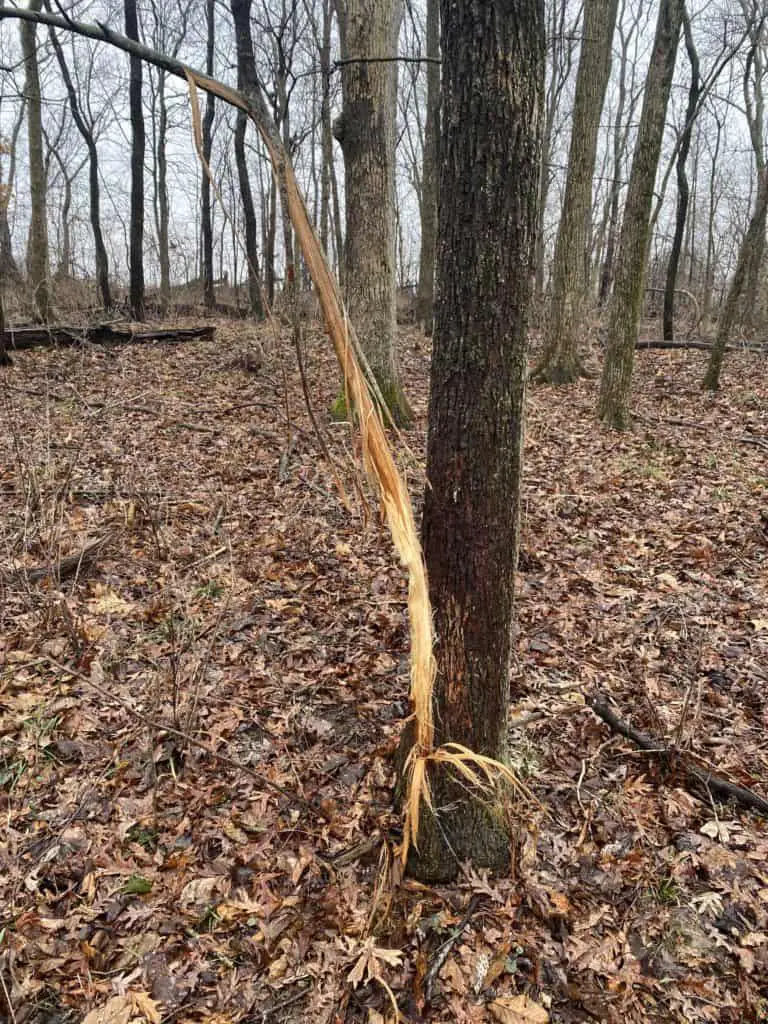
9. Look for Rubs
Rubs are created from bucks rubbing their antlers against the trunk of a tree. Rubbing against the tree will leave scratches on the bark of the tree or will remove the bark all together. Rubs are confirmation that a buck visited a specific location. However, it might not necessarily be a great hunting spot if that buck is only traveling through that spot at night.
Rubs might also tell you how big a buck might be. If you see a rub where the bark is complexly removed from a tree that is 8” in diameter or bigger, you can bet the rub was made by a larger set of antlers. Big bucks and small bucks both rub small diameter trees and little bucks even make scratches on large diameter trees. However, a big rub is usually made by a larger set of antlers.
10. Look for Scrapes
Scrapes are the bare spots of dirt where bucks paw at the ground and mark their territory. Every scrape usually has something hanging over it. This can be a tree branch, vine, or a piece of rope like the one in the picture below. Click this link to learn more about rope scrapes. Scrapes can be a great spot to monitor deer with a trail camera. These are locations that bucks will repeatedly visit.
Scrapes are made in all kinds of locations, but the easiest ones to find are on field edges. However, finding scrapes within security cover may offer a better place to ambush a big buck, especially if he’s not comfortable enough to expose himself on a field edge during daylight hours.

11. Look for deer trails
Deer trails are usually no wider than one or two feet and are easily recognizable in most situations. Heavily worn deer trails will help clue you in on how deer move through the property. After deer season is over, I will walk along these trails to see how they navigate through a property and then map those trails out on an aerial map. This is just one part of my process for learning everything I can about an area so that I can strategically hunt it.
12. Look for pinch points & funnels
One of the best ways to scout for deer and hunt them is by finding pinch points and other areas that funnel deer to move through a narrow area. Deer like to follow a path of the least resistance. Therefore, you will come across more deer sign in spots that pinch and funnel deer down.
Let me describe to you one of my favorite treestand locations. There are two large blocks of timber that are connected by a tiny strip of timber about 80 yards wide. Additionally, there is a river that runs along one side of this strip of timber. To funnel the deer movement even more, there is a fence that runs perpendicular to the river and cuts through the timber. This fence has a low spot where most of the deer cross. This spot is absolutely killer! If you can find hunting situations like this then you will have a great opportunity to shoot a deer if one happens to come by.
13. Look for human Intrusion
Keep an eye out for signs of other people when you go on scouting trips. It doesn’t matter if I’m on public or private land, I’m always keeping an eye out for signs of human intrusion. Look for tire tracks (bikes, ATVs, trucks), tree stands, boot prints, etc. When hunting highly pressured spots you are better off scouting humans than deer.
In most cases, deer will do whatever they can to avoid human pressure. They learn to find spots where humans don’t normally go so that they feel safe. Those are the exact places where you want to hunt. Places that are easy for people to access are going to see more human pressure in most cases. However, don’t overlook spots that seem like poor spots to hunt. For example, hunting within 100 yards from a parking area might seem like a bad spot to hunt. However, how many hunters are thinking that same thing and no one ever ends up intruding on that area? The places that seem unlikely to hold deer could be the exact spot you need to hunt.
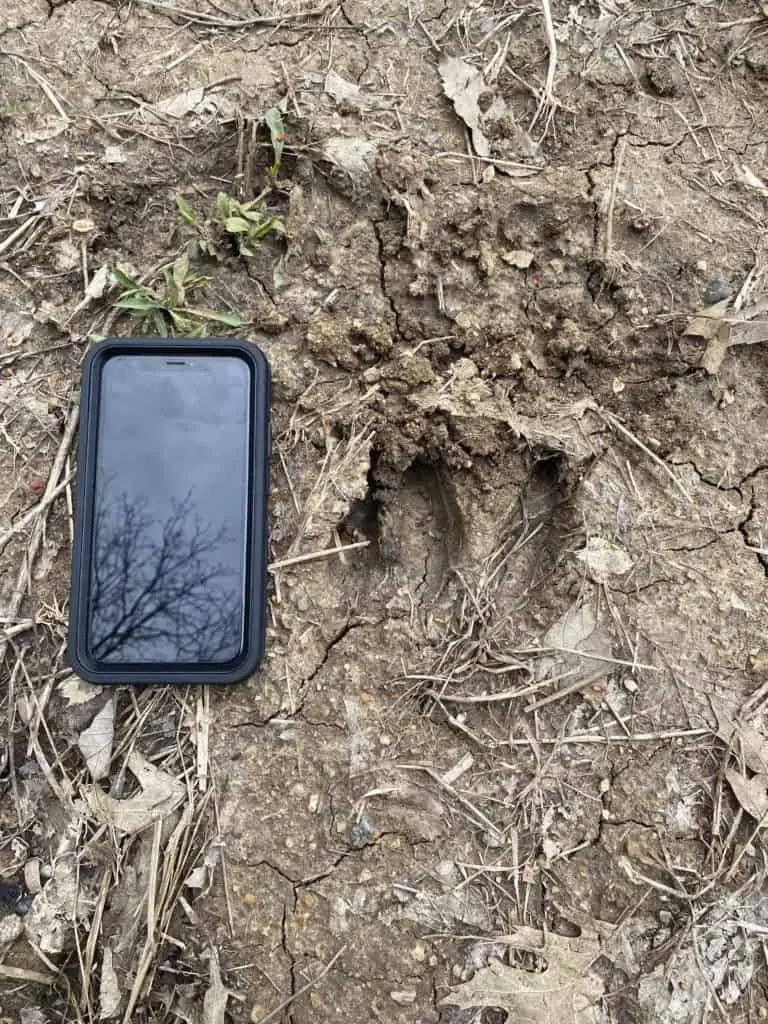
14. Look for deer tracks
Scouting for deer tracks is another way to confirm that deer are using the area. You can learn a lot more than you think from a deer track. For example, you can learn what direction they are traveling in. You might also figure out where deer like to enter and exit their bedding areas or feeding locations. Additionally, we can determine how recent the track was made from how the soil looks. If the soil is all died up and cracked, the track is not that fresh. Lastly, deer tracks come in different sizes based on the sex and age of the deer. A mature deer hoof print is about 6” long and 4” wide.
15. Look for Scat
Deer poop, or the lack of it, is another clue that can help us understand if deer are using an area. Scat that is hardened and dried out is not fresh deer sign. If you are scouting during deer season, you want to see fresh scat. When I find some, I usually push the tip of my boot against the scat to get an idea of how fresh it is. If I see fresh scat, rubs, and scrapes all within proximity to each other, I know I’m in a good spot. The question is whether the deer are using this spot during daylight hours or not.
16. Look for food sources
A deer’s daily routine is spent browsing on food, taking naps, and hiding from predators. If you know where deer are bedding and feeding, then you have great chance at killing them. Sometimes deer feed within the security of their bedding locations and other times they are feeding in wide open food sources where they can easily be seen. Deer eat several times throughout the day so it’s important to find their food sources when strategizing where and how to hunt them.
17. Look for bedding areas
Deer hunters should learn how to find bedding areas because it’s one of the best places to kill mature bucks. If you aren’t hunting a mature buck near his bedding area, your odds of killing that buck are slim. Hunting close to bedding areas where deer spend most of their time will drastically increases your odds of success in the field. Bedding areas can be just about anywhere that a deer roams. However, they are typically in areas that provide the best cover, have the lowest amount of human intrusion, and offer food close by or within the bedding area itself.
Scouting for bedding areas with boots on the ground is not a great idea if deer season is already in progress. Try to scout for deer bedding areas after the season is over. Take what you learn in the off-season and apply that information during the upcoming deer season. Learn more about when to enter a deer sanctuary.
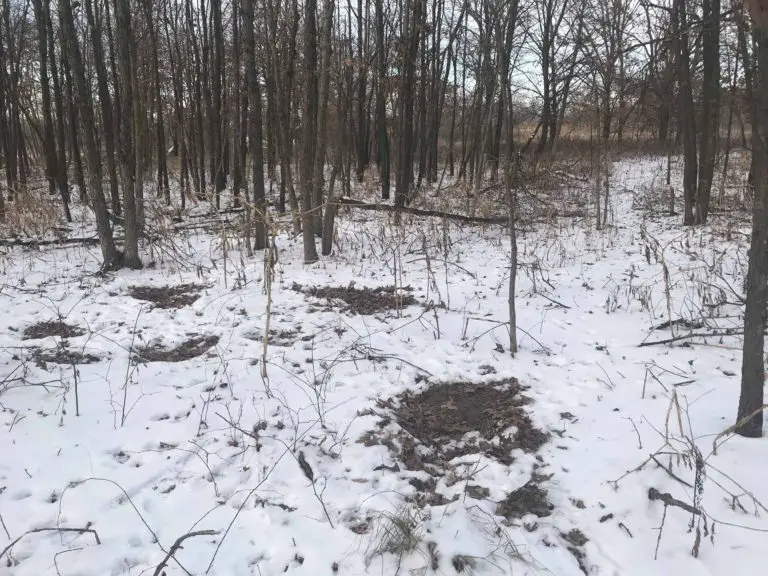
18. Look for access
How you enter and exit a location during a hunt should be one of the top priorities on your mind when scouting for deer and hunting spots. If you find a great treestand location but you can’t access that spot without scaring deer, then that’s a bad spot to hunt. I rather hunt an average spot with bullet-proof access than an excellent spot where deer can be educated by my access.
Figuring out where to park your truck can sometimes be difficult. You might need to park several hundred yards away from where you are going to be hunting. From the moment you park your truck and start walking to your hunting location, be thinking about where your wind is blowing. You need to keep yourself undetected from a deer eyes, nose, and ears. Keep these things in mind when scouting and determining your access.
19. Scout after deer season is over
I do most of my scouting after deer season is over. For me, deer season is the time when I get to benefit from all the work and scouting I did during the off-season. Killing mature bucks is a totally different ballgame than killing does or young bucks. Mature bucks are usually much less tolerant of humans than the rest of the herd.
I don’t want to do anything during the season that would decrease my chances of killing that buck. Like I mentioned earlier in this article, your odds of killing a mature buck are better if you’re hunting him close to where he beds. I don’t want to intrude on him until I am ready to climb up in a stand to kill him.
Get boots on the ground and scout as much as you can just after deer season is over. All of the deer sign that we talked about in this article will still be fresh enough to learn a lot about these deer and how to hunt them next season. I also like to scout for deer at the same time of year when deer sheds are hitting the ground.
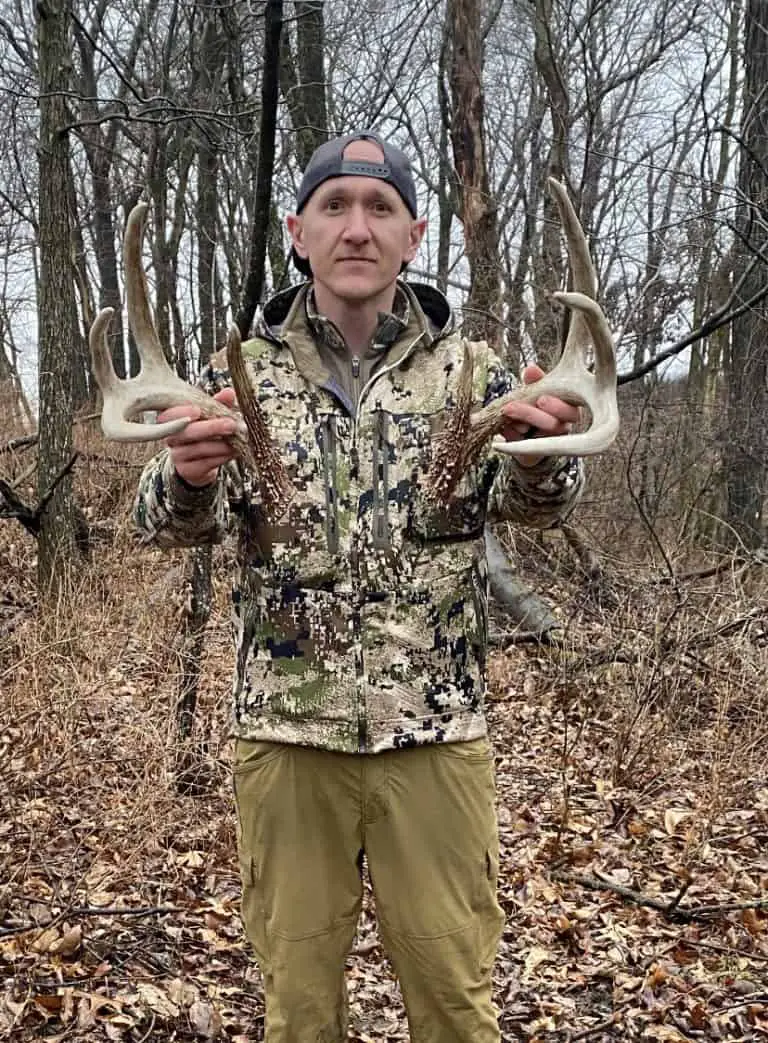
20. Scout during deer season
Even though I do most of my scouting after deer season is over, I still continue to learn as much as I can during the middle of the season. I might see something while hunting, or while driving around, that will help me get within range of the deer I’m after. If I have been having a hard time meeting a specific neighbor, I will keep trying to cross paths with them to strike up a conversation. Keep looking at the maps on your phone and strategize for future hunts. While you hunt, think about what you’re going to do during the off-season to improve your odds of success for next year.
Conclusion
Scouting for deer is going to help you become a more successful hunter. Remember all the tactics that we discussed in this article and try them out for yourself if you haven’t already. Practice is the key to getting better at finding deer and great spots to hunt them. Lastly, learn everything you can about deer and deer behavior. If you understand the animals you are hunting, you will be better at killing them.
